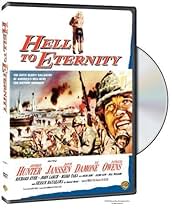AVALIAÇÃO DA IMDb
6,9/10
1,7 mil
SUA AVALIAÇÃO
Adicionar um enredo no seu idiomaWhen his adoptive Japanese-American family is sent to Manzanar after Pearl Harbor, a young Chicano enlists in the marines to become a hero in the Battle of Saipan.When his adoptive Japanese-American family is sent to Manzanar after Pearl Harbor, a young Chicano enlists in the marines to become a hero in the Battle of Saipan.When his adoptive Japanese-American family is sent to Manzanar after Pearl Harbor, a young Chicano enlists in the marines to become a hero in the Battle of Saipan.
- Prêmios
- 3 indicações no total
George Takei
- George Une
- (as George Takai)
Tsuru Aoki
- Mother Une
- (as Tsuru Aoki Hayakawa)
- Direção
- Roteiristas
- Elenco e equipe completos
- Produção, bilheteria e muito mais no IMDbPro
Enredo
Você sabia?
- CuriosidadesOn July 8, 1944, Pfc. Guy Gabaldon single-handedly brought in 800 Japanese prisoners. He is credited with a total of 1,500 from June to August, 1944 from Saipan and Tinian islands.
- Erros de gravaçãoIn all of Vic Damone's scenes as Cpl. Pete Lewis, he is seen wearing a very shiny gold bracelet, including in combat scenes. In reality, no person in combat would have been allowed to wear a shiny gold bracelet, nor would they have wanted to, out of concern for the bright glint given off which might betray their position. Damone should have been told to remove the bracelet during filming.
- Citações
Capt. Schwabe: Lewis? How's it going? Says here you were shot in the ashcan.
Pete: Not bad, sir. Could have been a howitzer.
Avaliação em destaque
Gabaldon was born and raised in Boyle Heights and attended Roosevelt High School with my brother-in-law Edwardo. He was not rejected by the Marines because of his ethnicity (Mexican-American) but because at 5'4" tall he did not meet Marine standards. It should be noted that the Marines were not adverse to recruiting in predominately Chicano communities. Guy was not "raised" by a Japanese family, but he did spend a couple of his teen year's with a Japanese family where he learned some basic Japanese. He was far from fluent in Japanese. However, the Marine Corps recruited him because they believed his knowledge of Japanese would be useful. The movie went to great lengths to hide Guy's true ethnicity. First, he was portrayed by Jeffrey Hunter, whose most notable role was playing 6'tall, blond blue eyed Jesus Christ. Guy described himself as "swarthy." In addition, there is a scene where the mamasan, in order to distinguish him from her Japanese grandchildren, refers to Guy as her "All American son." I once saw the movie on the History Channel. After the movie there was a panel discussion by historians. The final obligatory question was why the movie never mentioned that Guy was Mexican-American. The historian briefly answered that the movie was focused on the treatment of Japanese Americans during WW II and that Guy's ethnicity would have distracted from that. REALLY! Seems to me it would have made the story even more interesting. Typical Hollywood. Part of selling a movie means you have to make a white guy the central character and hero. More Hollywood is the David Jansen part and the party in Hawaii.
- tcroldan
- 22 de mar. de 2015
- Link permanente
Principais escolhas
Faça login para avaliar e ver a lista de recomendações personalizadas
- How long is Hell to Eternity?Fornecido pela Alexa
Detalhes
Bilheteria
- Orçamento
- US$ 800.000 (estimativa)
- Tempo de duração2 horas 11 minutos
- Cor
- Proporção
- 1.85 : 1
Contribua para esta página
Sugerir uma alteração ou adicionar conteúdo ausente

Principal brecha
By what name was Do Inferno para a Eternidade (1960) officially released in India in English?
Responda

































